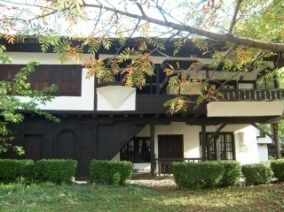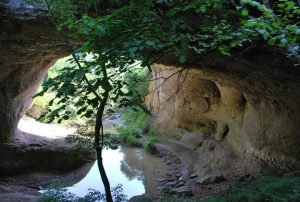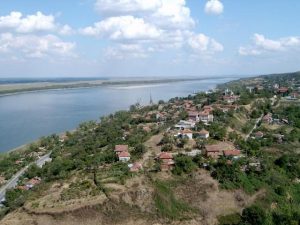

The house Dimitraki Hadzhitoshev was built in 1812 and it is an example of the architecture of the Bulgarian Renaissance. The exposition goes in two directions: on one side there is the ethnographical reproduction of the internal functioning of the Bulgarian house in the city of the XIXth century, the other one – a devoted historian of the multi-lateral patriotic activities of Dimitraki Hadzhitoshev.
The family Hadjiskata and especially Dimitraki Hadzhitoshev plays an important role in the econominal and in the political life not only in Utah, but also over the north – west of Bulgaria during the times of the Renaissance.
The economical affluence of the Hadjiskata family in principal is because of the stock of the commerce with agricultural products – wool, fell, butter, cereals, cotton, honey, wax, diminished in most of the part. The commercial activities of the family Hadjiskata go beyond the Ottoman Empire and the Balkan Peninsula and include a series of European countries.
At the end of the XVIIIth century and at the beginning of the XIXth century Hadji Tosho Tzenov, and later on, the oldest son of Dimitraki are among the notable personalities of the city. They are among the initiators of the detachment from 1804 of the first diplomatic mission of the Bulgarian Renaissance ‘Zambin – Nekovich”, in Russia, under the purpose of easing the purpose of the Bulgarian people and of opening the path for its liberation from under the Ottoman domination.
The actions of Dimitraki Hadzhitoshev are acute at the beginning of the XIXth century. The fight for an independent Bulgarian church evolved in a national movement and it ended with establishing the Bulgarian Hexarchy.
It initiated the opening in 1822 of the first secular school from Vratsa.
Extremely significant are the efforts of Hadji Tosho Tcenov, Dimitraki Hadzhitoshev for the political liberation of Bulgaria, who believed that would come in the help of Russia. It supports actively the Russian commanders during the times of the Russian – Turkish war from 1806 – 1812, and then there followed the Russian – Turkish war from 1828 – 1829, and it built near the farm of the Kunino Tower with crenels, with the production of proeminent metal and weapons. These actions of him don’t remain hidden for the Turkish authorities, and in 1827, the sultan issued a firman for the decapitation of the courageous and of the patriot from Vratsa.
The cause of Dimitraki Hadzhitoshev was built by his sons – Zamfiraki, Alexandru and Todoraki. Zamfiraki left in Sofia and was involved in the fights of the church – folkloric and of liberation. Alexandru is preoccupied by the diplomatic activity for the liberation of Bulgaria, but in 1856 he was poisoned by the Ottoman authorities from Sofia. The youngest – Todoraki, stays in Vratsa for actively participating the management of the municipality Vratsa and at the movement for an independent Bulgarian church, and after the liberation he becomes a member of the Constitutive Gathering.
In the exhibit you can see the pictograms and a triptych, traditional copper tool, personal objects which belonged to the family Hadjiskata – a box with writing instrument, an encrusted pistol – firestone with pearl, the embossed silver spoon, mahogany spoon and pearl beads, the silver shrine, the applied image of the vulture with two heads, the original copy of the first edition of “Kiriakodromion, Nedelnik” – the first early printed Bulgarian book published in 1806 by the Saint Sofronie, the Bishop of Vratsa, photograph documents and archive materials regarding the family Hadzhitoshev.
The economical prosperity of the Hadzhitoshev family left a print on the space composition and over the decoration of the house. It has two floors and a basement and two outdoor, picturesque terraces and an interior yazlak. At the first floor there is in the biggest part the area which satisfies the family’s needs. It is composed by a kitchen with a fireplace and cabinets, a dining room, a working room and the women’s bedroom. In the women’s working room there are exhibited the silk looms and the silk producers, as an illustration of a traditional activity not only for the Hadzhitoshev family, but for all the culture from Vratsa. The second floor has an official purpose for business visits and for the friends’ visits. Here there is a room with a living and near it a small utility room. They are heated with an original fireplace – Jamal. There is another guest room, the room transformed into a museum, and near it there are two smaller rooms, which are used for storing and for the servants. Many elements of the house interior – the ceilings, columns and balusters, wall cabinets and louvers are decorated with a thin artistic flair. The sun, as a source of life and of light, is recreated by a beautiful sculpture, on the ceiling. In order to contribute at the unique aspect we also have a beautifully situated yazlak.




